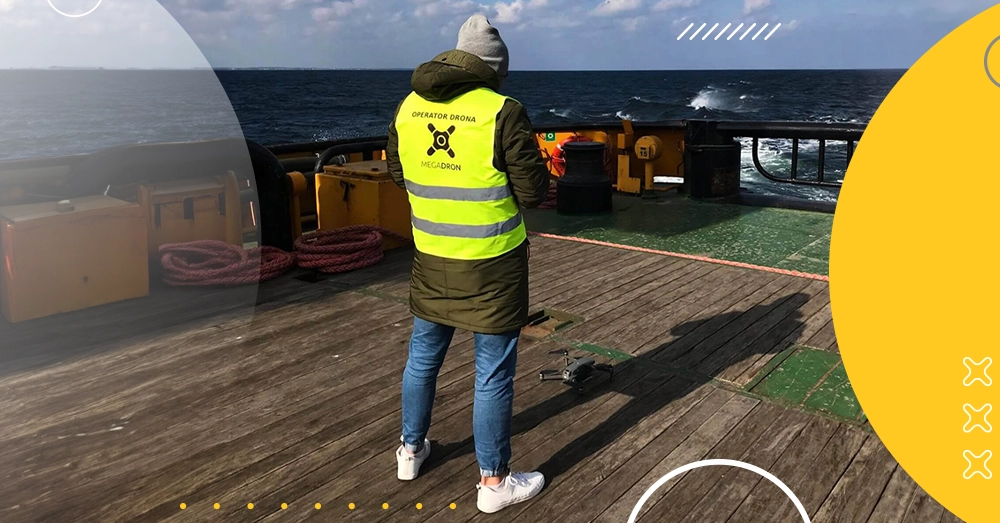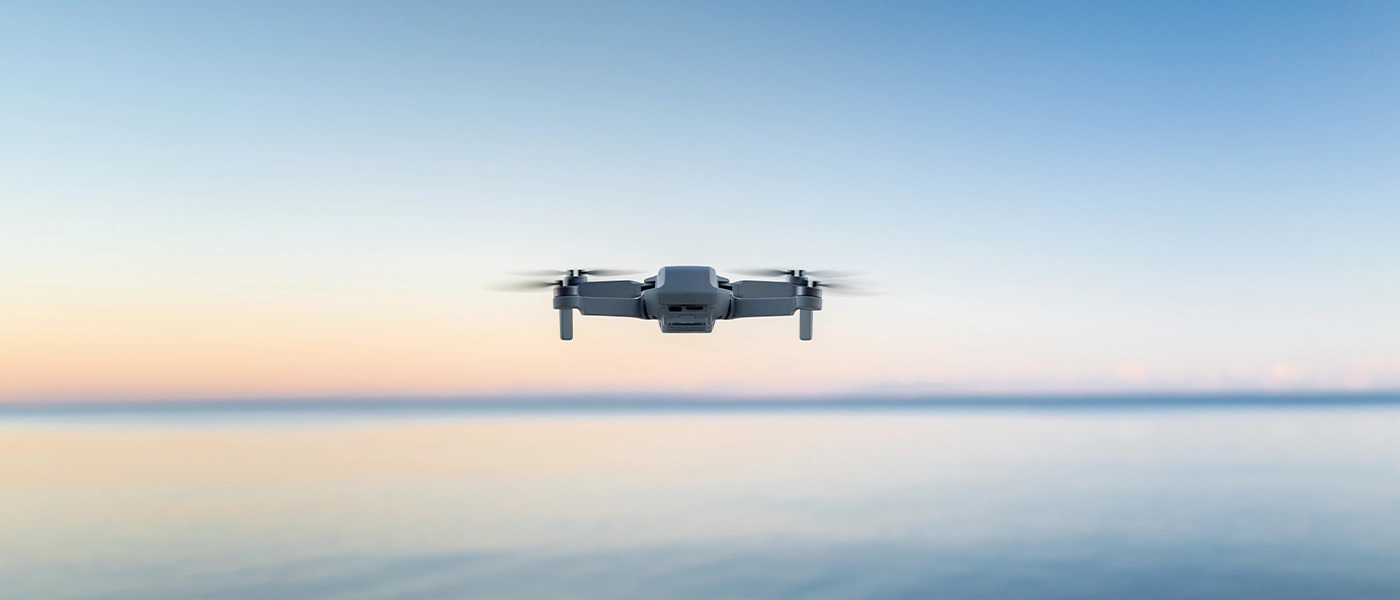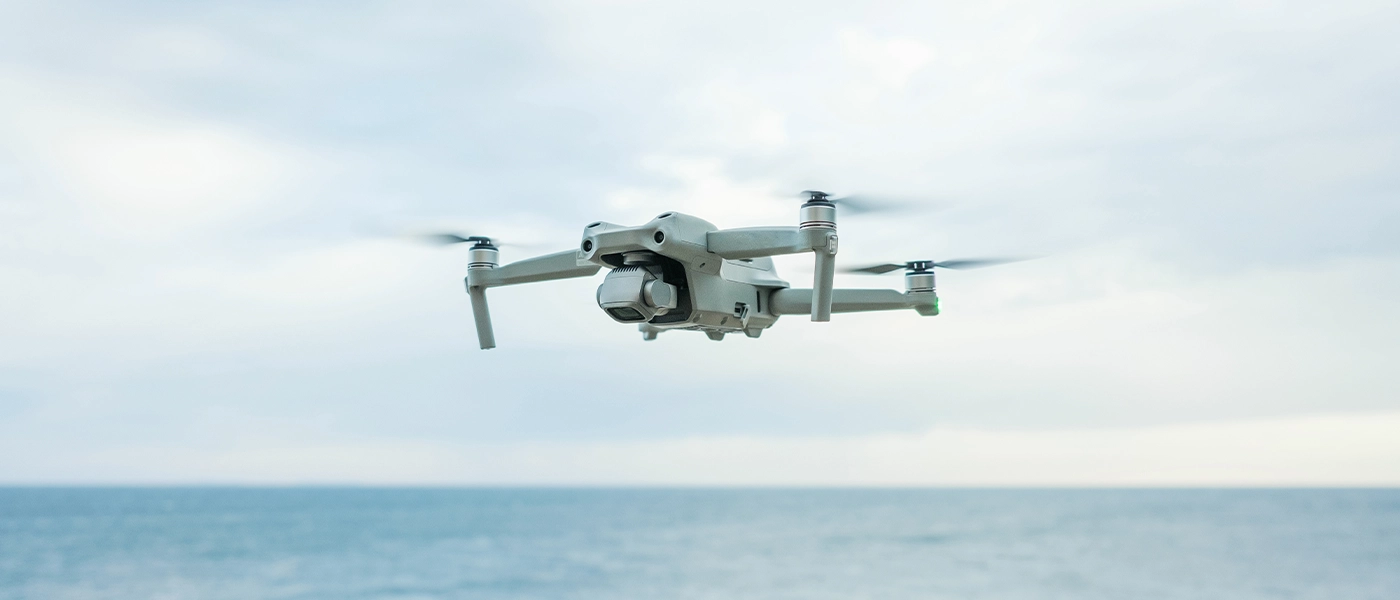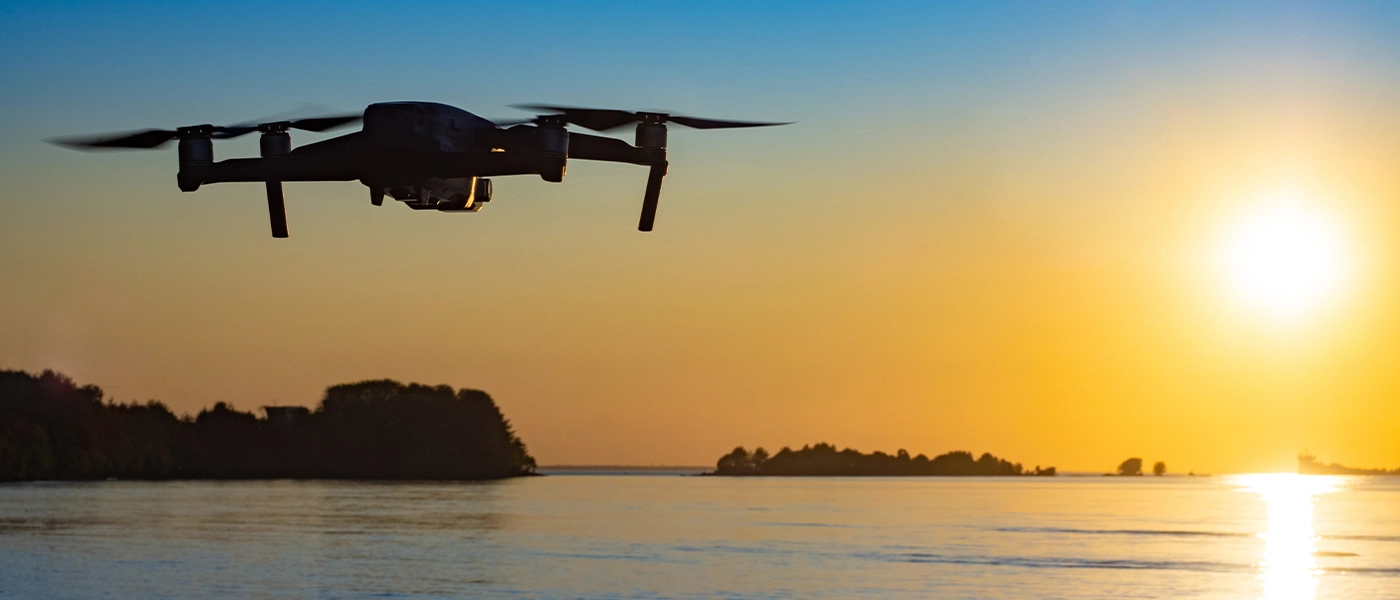How to fly a drone safely over water?

You are going to fly a drone over a lake or river? Or maybe you want to record your cruise at sea? It might seem that flying - everywhere is the same, but over water you need to be extra careful and change some settings. Drones give us great opportunities to capture fantastic shots from many interesting and hard-to-reach places, but you need to be properly prepared. In this article, you'll find out what the dangers are and read some important tips to make flying over water as as comfortable and safe as possible.
What are the risks in flying a drone over water?

Strong winds
Strong winds are one of the biggest threats to drones, especially over water. It can not only affect flight stability, but also significantly reduce battery life. It's better to avoid flying in high winds.
Waves
Waves pose a huge threat when flying at low altitude. To avoid contact with waves, always fly at an altitude that allows you to safely avoid them. Even small waves can be dangerous, therefore keep a proper distance from the water.
Antennas
Lighthouses, ships, devices using antennas, Wi-Fi and magnets can interfere with the compass or GPS signal of the drone. Check your surroundings before flying and avoid flying near such sources of interference.
Natural objects
Trees, rocks and other natural objects can pose a threat to a drone. Carefully observe your surroundings and plan your flight to avoid collisions with natural obstacles.
Boats
When flying over water, pay special attention to moving boats and ships. Always keep them under constant observation, to avoid collisions. You should not approach the boat at too close a distance to avoid creating a hazard.
The bottom line - turn off the VPS (video positioning system)

Turning off the video positioning system (VPS) is the most important action before flying over water. Many people forget this, causing their drone to simply 'dive' after flying above the surface of the water. Drones DJI are equipped with vision sensors that scan the surface to position the drone. The water mirror reflects the light and this affects the operation of the VPS, so the drone can be deceived and lowers the flight. When the drone's vision sensors are turned off, unstable flight will be avoided.
Below is a video on how to disable this feature on the drone DJI Mini 4 Pro:
When flying at a low altitude above the water, keep your drone's altitude under control at all times, as it it may drift downward. For safety, try to fly at a minimum height of 1-1.5 m above the water at low speed, with the drone in sight.
Not all drones may have this feature, so it's better to make sure beforehand what settings the drone you own should have.
Taking off and landing from a boat/ship

Taking off and landing from a boat or ship is complicated because you are drifting and moving all the time. If you are swimming and the position changes, the drone can land in the water, returning to the starting point memorized by the GPS. To prevent this from happening, turn off the auto home function.
If you want to use automatic return, set as destination point "Home Point Me". This will bring the drone back to where you are with the controller. Watch the drone's return flight and if in doubt, cancel the return by landing manually.
How to prepare for flying over water with a drone?
Before deciding to fly over water, master land flying very well - takeoff, landing, flight and control. Practice is paramount, the better the control of the drone, the safer and more comfortable the flight will be. Flying over water is dangerous, but proper preparation minimizes the risk. If the situation requires you to record shots without the possibility of visual observation, pay close attention and maintain a safe height above the water.
Safety Guarantee
DJI offers the option to purchase additional insurance for your drone for a period of 12 or 24 months. During this time, you are entitled to exchange for new equipment twice or four times for a small fee, provided you deliver the damaged equipment. Purchase additional protection definitely recommend to everyone. For more on DJI Care Refresh, see the article: DJI Care Refresh - is it worth it? Frequently asked questions
Summary
Flying a drone over water offers many opportunities to take good shots, but comes with some risks. Strong wind, waves, antennas, natural objects or the moving boat you are in are all factors that can interfere with your flight. It is very important to turn off the video positioning system (VPS), which can be confused by light reflections from the water surface. You need to master flying a drone well before you decide to fly over water. Taking off and landing from a boat requires more skill and proper GPS settings. Before you decide to take such flights, prepare well and keep yourself and your drone safe.


